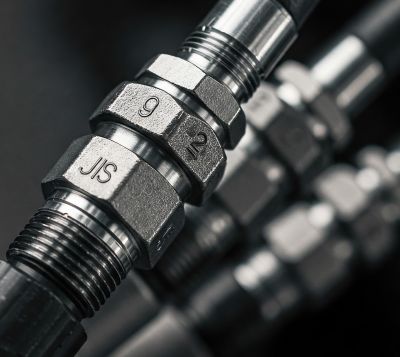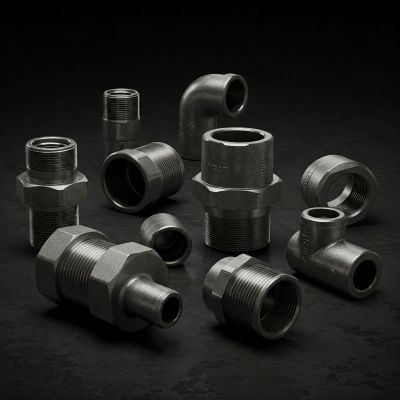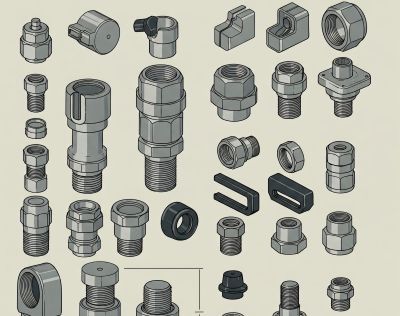Pipe fittings are essential components in various industries, ensuring secure and efficient fluid or gas flow. However, different regions have developed their own fitting standards, leading to compatibility challenges when connecting pipes and equipment from different countries. Understanding these standards is crucial for avoiding leaks, ensuring safety, and maintaining system efficiency.
In this blog, we will compare three major fitting standards: JIS (Japanese Industrial Standard), NPT (National Pipe Thread), and BSP (British Standard Pipe). We will explore their characteristics, applications, and key differences to help you choose the right fitting for your needs.
What Are Pipe Fitting Standards?
Pipe fitting standards define the specifications for thread design, sealing mechanisms, and dimensions to ensure compatibility and reliability. These standards prevent leaks, improve system efficiency, and simplify manufacturing and installation processes.
Key Factors That Differentiate Fittings:
1. Thread Type – Parallel vs. tapered threads
2. Sealing Method – Thread sealing vs. O-rings vs. gaskets
3. Application – Hydraulic, plumbing, gas, and industrial systems
Overview of JIS (Japanese Industrial Standard) Fittings
JIS (Japanese Industrial Standard) fittings are widely used in Japan and various Asian industries. The JIS standard defines pipe threads, ensuring compatibility across different manufacturers and applications.
Common Applications:
➡️ Automotive industry
➡️ Hydraulic systems
➡️ Industrial machinery
Characteristics of JIS Threads:
➡️ JIS BSPP (Parallel Threads): Uses a gasket or O-ring for sealing
➡️ JIS BSPT (Tapered Threads): Relies on thread engagement for sealing
Compatibility Considerations:
➡️ JIS fittings are similar to BSP but not always interchangeable.
➡️ Adaptors may be required for use with NPT or BSP systems.
Overview of NPT (National Pipe Thread) Fittings
NPT (National Pipe Thread) is a widely used standard in North America, primarily in the U.S. and Canada. It is designed for high-pressure applications.
Key Features of NPT Threads:
➡️ Tapered thread design
➡️ Requires sealant (e.g., PTFE tape or thread compound) to prevent leaks
Common Applications:
➡️ Plumbing systems
➡️ Gas pipelines
➡️ High-pressure hydraulic systems
Limitations and Challenges:
➡️ Not compatible with BSP or JIS without adaptors.
➡️ Requires proper sealing techniques to prevent leaks.
Overview of BSP (British Standard Pipe) Fittings
BSP (British Standard Pipe) is the primary standard used in Europe, Australia, and parts of Asia. It is commonly found in plumbing, gas, and hydraulic systems.
BSPP vs. BSPT:
➡️ BSPP (Parallel Threads): Requires a gasket or O-ring for sealing.
➡️ BSPT (Tapered Threads): Seals through thread engagement, similar to NPT.
Common Applications:
➡️ Plumbing and gas systems
➡️ Hydraulic and pneumatic systems
➡️ Industrial machinery
Compatibility Issues:
➡️ BSPP and BSPT are not interchangeable with NPT.
➡️ JIS and BSP share similarities, but they are not always directly compatible.
Key Differences Between JIS, NPT, and BSP
|
Feature |
JIS |
NPT |
BSP |
|
Thread Type |
Parallel (BSPP) & Tapered (BSPT) |
Tapered |
Parallel (BSPP) & Tapered (BSPT) |
|
Sealing Method |
O-rings, gaskets, or thread engagement |
Thread engagement with sealant |
O-rings, gaskets, or thread engagement |
|
Regional Usage |
Japan, some Asian countries |
North America |
Europe, Australia, some Asian regions |
|
Interchangeability |
Limited compatibility with BSP |
Not compatible with BSP or JIS |
Limited compatibility with JIS |
How to Choose the Right Pipe Fitting Standard
Key Factors to Consider:
1. Pressure Rating: Ensure the fitting can withstand the required pressure.
2. Material: Choose a material (brass, stainless steel, etc.) suited to your application.
3. Application Type: Consider whether it’s for plumbing, gas, or hydraulic use.
4. Regional Compatibility: Ensure the fitting matches the standard used in your country or industry.
Checking Compatibility:
➡️ Verify thread type before installation.
➡️ Use calipers or thread gauges to measure thread pitch and diameter.
➡️ Consult manufacturer specifications.
Using Adapters:
➡️ If connecting different standards, use proper adapters to prevent leaks.
➡️ Always confirm the pressure and material compatibility of the adapter.
Conclusion
Understanding the differences between JIS, NPT, and BSP fittings is essential for ensuring a leak-free, efficient, and safe system. Each standard has its unique applications and compatibility challenges, so selecting the right one depends on regional usage, sealing method, and application requirements.
For complex installations or when in doubt, consulting an industry professional can help avoid costly mistakes. Choosing the correct pipe fitting standard will ensure durability and reliability in your system.
Do you have experience working with these fittings? Share your thoughts in the comments below!
Post time: Mar-14-2025




